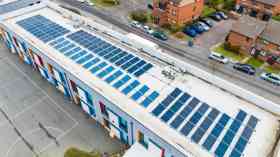Established in 1981, Micro Computer Consultants Limited (MCC Digital) are one of the UK’s most experienced Apple Authorised Education Speci
Supplier Focus
Latest Supplier News
Borg & Overström is a UK manufacturer of premium drinking water solutions. For over 20 years Borg & Overström has developed sustainable, bottle-less, hygienic, drinking water dispensers with the aim to provide exceptional, safe, self-service drinking water into schools, universities, workplaces and communal spaces.

 Schools may feel burdened with almost daily policy changes. Secondary schools are being met with reformed GCSEs in English, maths, science, history, and geography, which will be ready for first teaching in September 2015.
Schools may feel burdened with almost daily policy changes. Secondary schools are being met with reformed GCSEs in English, maths, science, history, and geography, which will be ready for first teaching in September 2015. 








